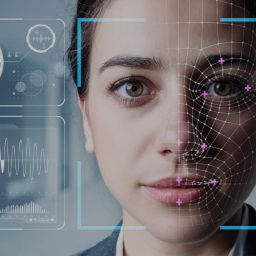Data has always been an essential element in business management, but until recently it was used almost exclusively as an indicator to monitor the execution of business models. Today it should also be used as real raw material for the innovation of new products or services (or for improving existing ones).
IESE Professor Javier Zamora, academic director of IESE’s Focused Program Digital Transformation: How to innovate and Lead your Business, explains: “In this context, data is becoming one of the main assets of organizations. This does not mean that the physical asset is not important anymore, but that in order to capture the value it is also essential to have the data associated with that physical asset.” From there, he goes on to say that: “what we need to see is how data-driven organizations transform themselves to make the most of this new asset.”
And no one can escape: “No company is immune to this transformation. Some industries, by their nature, have been impacted already: media, retail, financial, and insurance companies. It’s happening now in logistics and automotive, and it’s coming to the energy and healthcare sectors,” says Zamora.
How to make data-driven decisions
In environments of low uncertainty, repetition and experience have worked as a good guide for many managers, but in environments as ever-changing as the current one, “data is like a microscope that allows us to go beyond intuition, refining it”. This is how Professor Javier Zamora sums it up: “The past is no longer a good predictor of what will happen in the future. We are seeing this, for example, with the pandemic, the supply chain crisis, the war in Ukraine, and the geopolitics with the energy crisis.”
This is what managers need to focus on in order to make data-driven decisions:
1. Outside-in thinking
If the world is changing faster outside the perimeter of the organization than inside, leaders need radars to see what is happening outside, and to capture data that will allow them to have the intelligence that will enable organizations to better serve their customers.
2. Learning orientation
To join what is known as learning orientation. In other words, not only being able to lead companies towards greater success, but also helping them to learn. Pilot testing, fail-fast, collecting data, and improving adaptability to pivot quickly to something different if necessary.
3. Becoming agile
To stop thinking about sequential development and instead embrace iterative, agile environments with cross-functional teams.
4. Breaking down organizational silos
To break down watertight organizational silos by ensuring that information travels between different areas of the organization.
5. Sharing information
To decide which ecosystem is best for co-creating and sharing information.
6. Having data proficiency
To have data proficiency so as to enable meaningful conversations with the more technical teams or to identify which business translator is the ideal match between a business and its technical needs.
Why knowing how to make data-driven decisions as a manager is vital
There is a well-known joke where one manager is talking to another manager and says: “you are not going to be replaced by a robot, but by someone who understands robots“. In this sense, Zamora explains that “what is being asked of today’s managers is to be ambidextrous. It is not that they have to lose their current managerial skills but they have to develop new ones to be able to extract the maximum value in this world of digital transformation in which data becomes an asset.” Thus, it is already vital to have the capacity to be able to have “meaningful conversations about this technological dimension, because it is part of the viability, vision, and strategy of the company. It is not something that can be delegated 100%,” he explains.
According to Zamora: “those companies that are going to succeed are those that are capable of continually adapting to a changing environment”, which is what is known as malleability, overcoming the rigidity of being exclusively good at core competencies, “bimodal organizations” that are excellent in the current business model but at the same time have their sights set on the future.
With IESE’s executive education programs you will learn the techniques to become a leader of the future, leading your company to greater success. And, as Professor Javier Zamora says, “the question we should ask ourselves is not what is the return on investment of doing this but of ignoring it”.

















